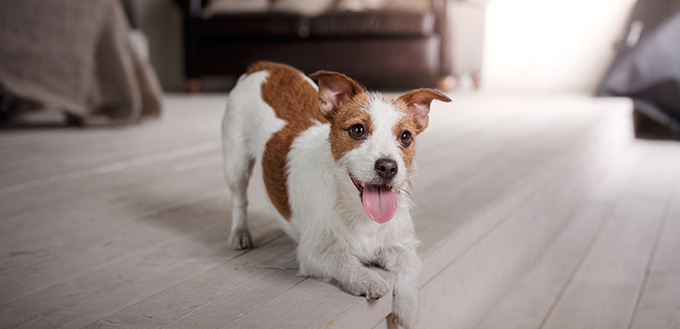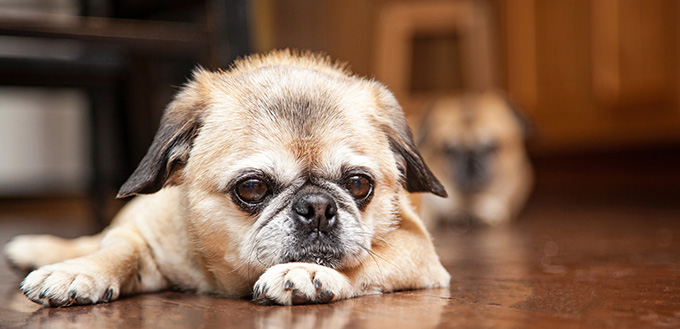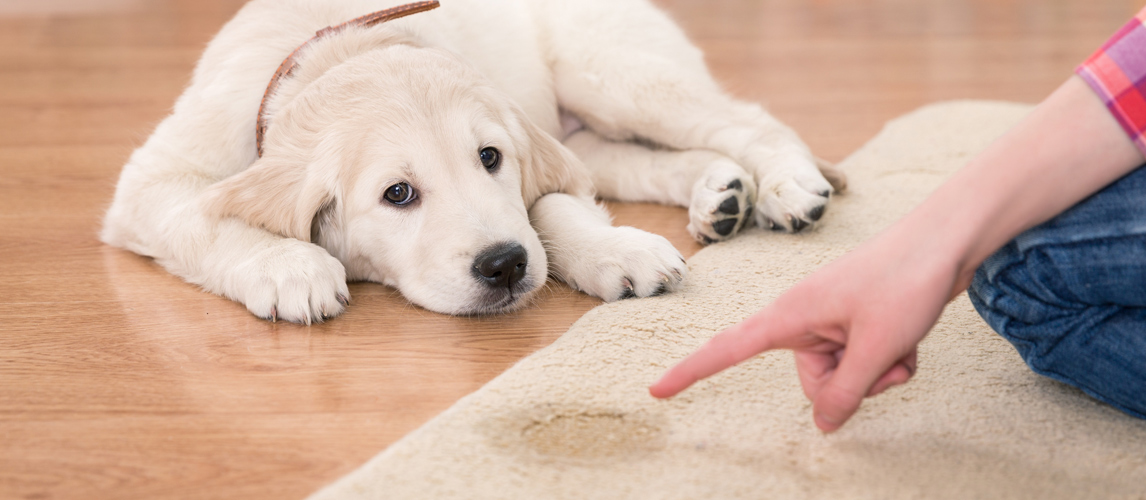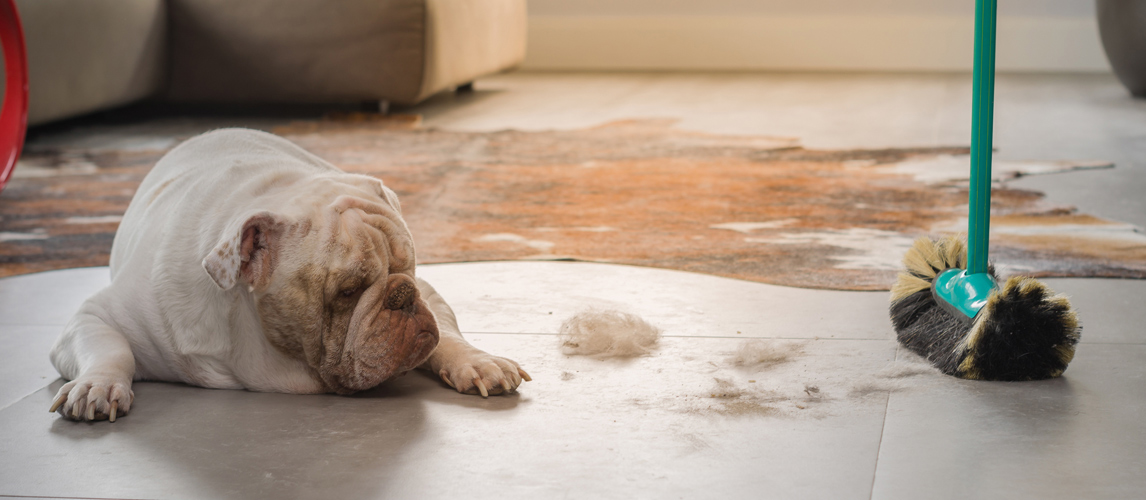Regardless of how much you train your dog or how well-behaved it is, there will always be instances when accidents happen. And if you happen to have wood floors, not only are you looking at urine stains that may be very challenging to remove, but also hardwood floor repairs that can come at a very prohibitive cost. That is why it is imperative that you take more proactive measures to help protect by preventing urine damage to hardwood floors.
Apply Hardwood Floor Sealants
One of the best ways you can protect your hardwood floor from pet urine is by applying an appropriate floor sealant or any other floor finishing product that can increase the outer layer that coats the wood. It would be like putting glass between the surface of your hardwood floor and the paws of your pet. It is like a barrier or a defensive wall which will help prevent urine from leaking into wood.
As you may already know, wood is not really a non-porous material like ceramic, glass, or even metal. Even the slightest moisture on the surface can eventually find its way into the deeper layers of the wood structure. While the damage may not be readily apparent from the outside, moisture inside wood can substantially weaken the integrity of the individual wood fibers. Not only that, you will also have to contend with the possibility of inviting mold and mildew to grow and increase in population in the hardwood.
Scratches on your hardwood floor can increase the rate of moisture absorption by the wood. It’s quite simple. Just look at your skin. If your skin doesn’t have any scratches, you’re more likely to be protected against bacteria that can cause skin infection. But once you have a scratch, bacteria and other germs now have an entry point. The same is true with hardwood floors. The outer surface may be tough and may prevent the seepage of moisture. However, if there are cracks or scratches on the surface of the wood, moisture will enter through these small openings.
Sealants or floor protective finishes can help prevent such occurrences by creating an impermeable layer so that the wood underneath this layer will not be affected by moisture. It will not prevent scratches, but at least the scratch will be on the finishing material itself and not on the wood. This is why it is best to apply several layers of dog proof hardwood floor finish rather than simply applying a single coat. The thicker the barrier the more protection you afford on your hardwood floor.
One of the most commonly applied floor finishing is polyurethane. It is highly advisable to apply at least two to three layers. However, it is important to allow sufficient time for one layer to become dry, cured, and harden before you can apply another layer. This helps optimize the protection that you will be making.
Do understand that even if you already have sealant applied onto your floor, it is still best to be vigilant about cleaning and drying the floor right after your pet has urinated on it.
If your hardwood floor is rather rough, you may want to have it sanded first before applying a sealant and then several layers of floor protectants.
Alternatively, you can try applying a newer floor protection technology that involves catalyzed cross-linkers. These materials provide a much better and definitely tougher surface that is nearly scratch-proof. The substances are also bonded together a lot better so they can protect your floor from your dog’s urine. This type of dog hardwood floor protection may be pricey, but it sure can give you the results that you require.

Consider Applying Penetrating Oil
There’s a reason why many homeowners choose hardwood floors over concrete or other types of flooring. Wood floors are more elegant and they can easily bring life to an otherwise dull and boring room. Unfortunately, applying way too many layers of polyurethane can leave a plastic-like appearance on the wood’s surface. You can still see the wood, but the reflection coming from the polyurethane layer can give it a less natural look.
If such is a big issue for you, then you might want to consider applying penetrating oil. As the name implies, penetrating finishes do not cover the surface of the floor. Instead, they seep right through the grain of the wood and strengthen the individual fibers. This will help strengthen the wood grain, allowing it to take the brunt of both your pet’s urine and friction caused by moving furniture and pet traffic. It gives your wood floor a more natural look, albeit at the expense of not giving it a sheen that will pop out.
Maintaining a penetrating oil-finished hardwood floor is quite easy as you can only focus on the affected area.
Use Pet-Friendly Area Flooring Materials
While applying an appropriate sealant and protectant on the floor can help minimize the seepage of pet urine into the deeper layers, sometimes it doesn’t hurt to double up on the protection. Part of your pet urine proof flooring plan is the addition of pet-friendly flooring materials especially in areas where there is heavy pet traffic or wherever you observe your dog frequently has ‘accidents’.
For example, if you notice that your dog frequently pees in one corner of your house, then you might want to put a pet-friendly flooring material on this part of your home. The same is true with pet traffic. Take note how your dog behaves every time there is someone at the door. Does it make a beeline straight for the door or does it go around furniture in a roundabout before settling at the door? The point is for you to put additional floor protection in these areas so that the floor stays protected from both pet scratches and urine.
You can place an area rug or even a pet-friendly and hardwood-friendly mat on these sections of your home. Make sure to pick something that is resistant against pet urine and other liquids. It is often advisable to pick something that can be easily washed by simply hosing it off. If you don’t like an area rug, then maybe getting a specialty carpet – one that can be separated into smaller sections – might be a good idea. Such floor protection materials allow you to easily replace only the affected part or section.
You can also put wall-to-wall carpeting if you like. However, this utterly defeats the purpose of having hardwood floors. Homeowners often choose hardwood for their flooring material because of its natural elegance that they want to showcase. Putting wall-to-wall carpeting will cover the wood, preventing from being showcased to visitors and guests.

Clip Those Doggie Nails
Extra-long dog toenails can exacerbate urine damage to hardwood floors since these can scratch the surface of the floor. Scratches create entry points for pet urine and moisture to seep into the inner layers of the wood. This can significantly weaken the integrity of the wood. More than that, however, is that pet urine that permeates the hardwood floor can leave a really nasty odor that you will also need to address.
Check out our guide on Pet Odor Neutralizer.
Trimming your dog’s nails is, thus, important in maintaining the integrity of the hardwood floor. Not only are you protecting your floor; you’re also safeguarding the health of your pet. Extra-long nails can be quite painful as they scrape against the hardwood floor. These can also break which can be another source of pain for your pet. Moreover, long nails can reduce traction which can hamper your dog’s optimum mobility. This can also injure the tendons and lead to deformities in the dog’s feet.
Take a look at our review of the Best Dog Nail Clippers.
Keep an Eye on Fido
This might seem impossible since you really cannot supervise your dog all the time. That is why this has got to be a team effort with every member of your family. Dogs will usually present with the telltale sign of an impending urination by squatting or by lifting one of their rear legs. In most cases, they will seem in a hurry, walk in circles, or even start sniffing around. If you see your dog doing this, be quick to let your dog go out in your backyard. Whatever you do, don’t yell or shout at your dog when you do catch it about to pee.
Alternatively, you can allow it to go outside your home more frequently to have a bladder break. Some dogs can also be trained to ‘knock’ on their doors to tell their owners that they want to go outside to pee. Giving your pet more frequent potty breaks can help minimize it urinating on your hardwood floor. And if in case your house is not completely covered in hardwood flooring, then you can use pet gates to temporarily seal off these sections and prevent your dog from ever entering such areas. You can then remove the pet gate once you have someone who can keep an eye on your pet.
Protecting your hardwood floor from dog urine is easy. You can apply dog proof hardwood floor finish, pet-friendly area flooring materials, or penetrating oils. Keeping an eye on Fido should also help you maintain the integrity of your hardwood floor.
You may also like our article on the Best Indoor Dog Potty.
Sources:
- Dr. Patty Khuly, VMD, Eight Flooring Solutions That I Swear By, Vetstreet
- How To Remove Pet Stains And Odors, The Humane Society of the United States







Please provide samples of products that help reduce urine issues.